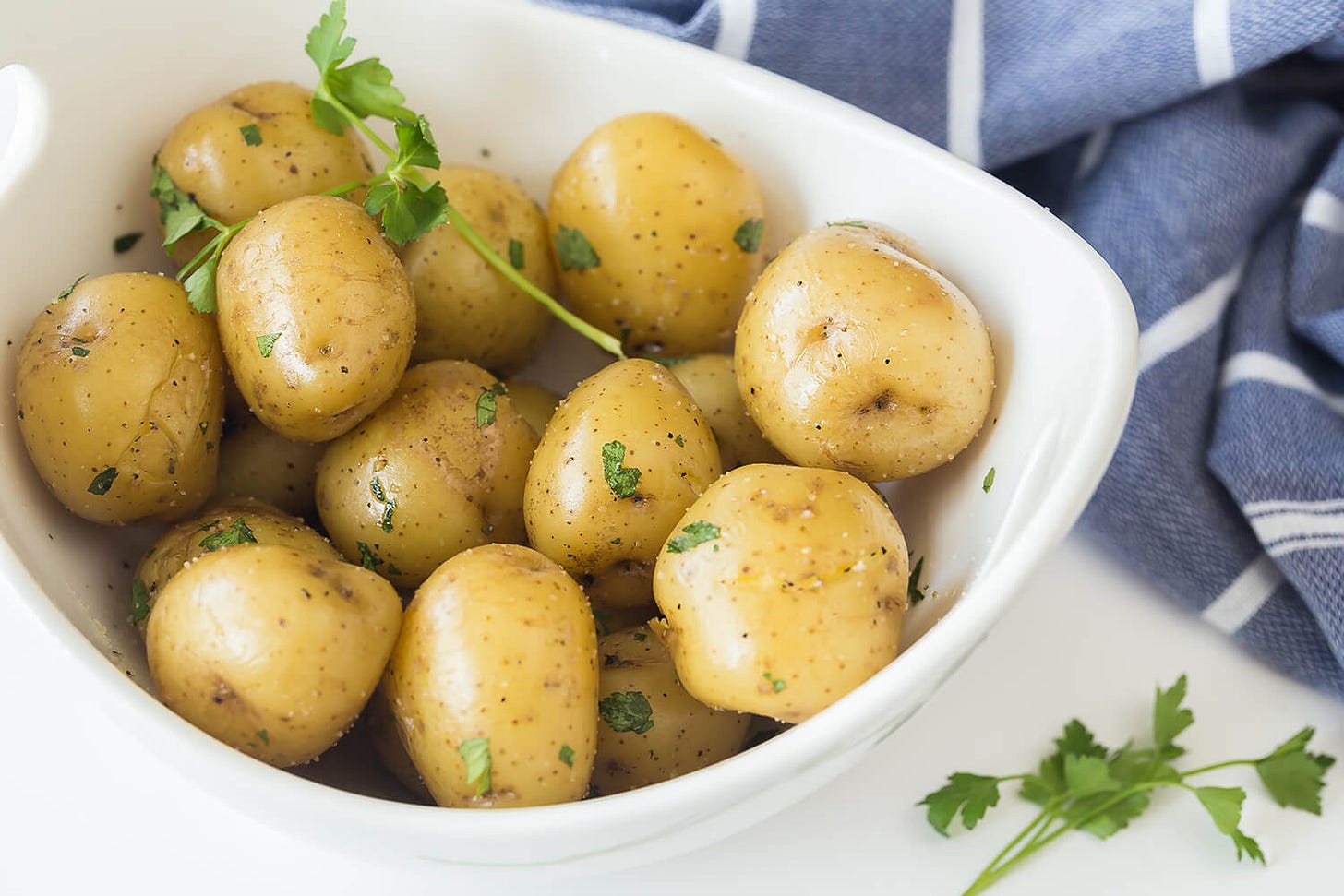Adapting to climate change will affect how we live, where we live, and just about every aspect of our lives. We will move buildings or erect seawalls against rising seas. More urban trees and greenery will help keep city dwellers cool despite rising temperatures. Higher temperatures may even affect the design of future airplanes as they struggle to gain lift in hotter weather.
Agriculture will also need to change. One adaptation is for farmers to change the crops they grow, swapping crops accustomed to cooler climes for those better suited to warmer environments. This is already happening throughout the world. Another solution is to develop crops that can grow in the new climates.
Potatoes are an obvious crop for adaptation
Worldwide, people grow lots of potatoes. One-third of all root vegetable crops are potatoes. And for good reason. Potatoes are among the most nutritious foods you can put on a dinner plate. A single potato can provide almost half of the required vitamin C for an adult and is a good source of iron, riboflavin, and vitamins B1, B3 and B6. The tuber that was domesticated by the Incas 1,800 years ago can also sustain your mineral requirements for potassium, phosphorus and magnesium. They contain antioxidants and provide roughage, too. Although this sounds like the most boring diet possible, potatoes are so nutritious that it is possible to survive, and survive well, on a diet of potatoes and milk, with a supplement of beans or lentils from time to time. You can’t say that about any other fruit or vegetable. Not bananas, not corn, not rutabagas. When it comes to nutrition, it’s potatoes.
Besides nutrition, potatoes have other advantages. Potatoes will naturally keep well in a cool dry place. When I was a kid, all the potatoes we harvested from our family farm were kept in a part of our cellar. Potatoes we harvested in August and September were a bit wrinkly but still good in March.
So potatoes are one of the best things ever, but climate change presents problems. Because their root systems are shallow, potatoes are quite sensitive to drought, and we are most certainly entering a time when the U.S. and much of the rest of the world will experience more frequent and longer droughts due to climate change.
Finding potatoes that grow well during drought
A team of Canadian agronomists looked into finding drought-tolerant potatoes at the Fredericton Research and Development Centre, Fredericton, Canada. They studied 58 varieties, most of which were cultivated strains. They grew the potatoes in greenhouses, watering them daily for five weeks, then withholding water for up to two weeks on a subset of the plants. They published their results in the Journal Frontiers in Plant Science on August 12th.
Most of the potato plants did poorly under drought stress, meaning they produced fewer pounds of potatoes. To simplify the study, the researchers then concentrated on six strains: two that did well under drought (Bannock Russet and Denali), two that performed moderately well (Fundy and Nipigon), and two that performed poorly (Onaway and Russet Norkotah).
Generations ago, if agronomists wanted to develop a drought-tolerant potato, they would choose the best-performing potatoes under drought conditions and cross them with other high-performing potatoes until they produced the desired result. Now, scientists can determine exactly why certain plants perform better than others. This team examined droughts effects on the potatoes’ photosynthesis rates, protein production, and other biological factors. They found a number of factors that help potatoes survive drought conditions.
Unsurprisingly, potato plant that slowly transpire water from their leaves performed well under drought conditions. Plants that conducted water through their stems well also performed well. Mostly, the best-performing potato strains were able to switch gears and use their remaining water more efficiently when things dried up. The Bannock Russet potato outperformed all the others, producing pound-for-pound, 85 percent of its potatoes during drought as it would produce under non-drought conditions. In comparison, some strains were only able to produce 15 or 20 percent of their potatoes under drought conditions.
The scientists suggest that the above factors can be used as criteria for selecting drought-tolerant potatoes. Further research at the genetic level may be able to give us a potato we can rely in on a hotter, drier world.
Any thoughts? How do you like your potatoes cooked? When you go to Red Lobster, what is your choice? French fries? Or baked potato?
For more environmental news follow me on Twitter @EcoScripsit.






I'm not normally a potato fan, but I have to be after this. I really enjoyed this article.